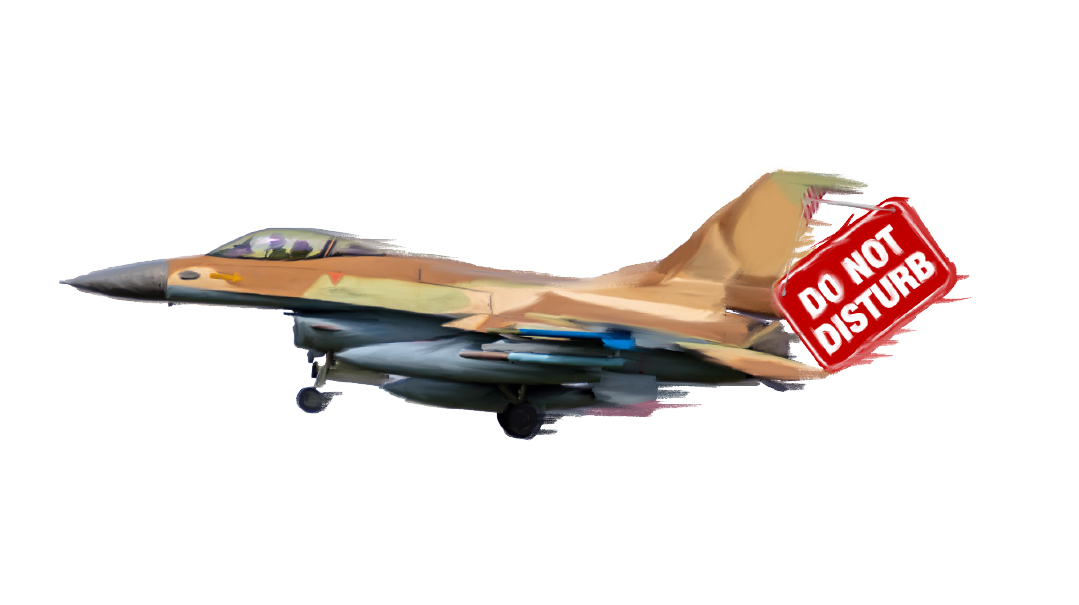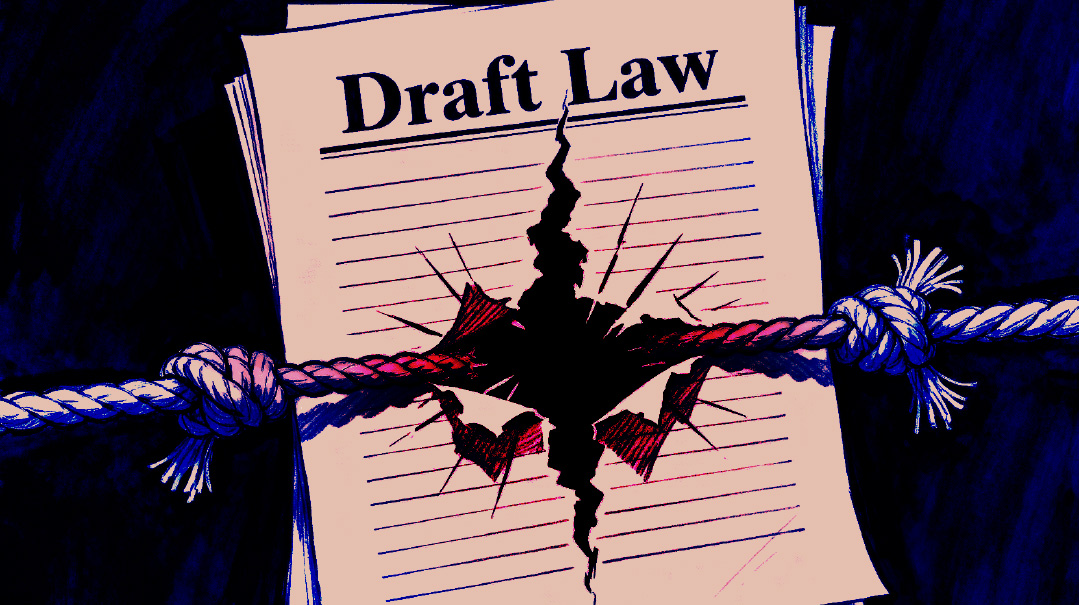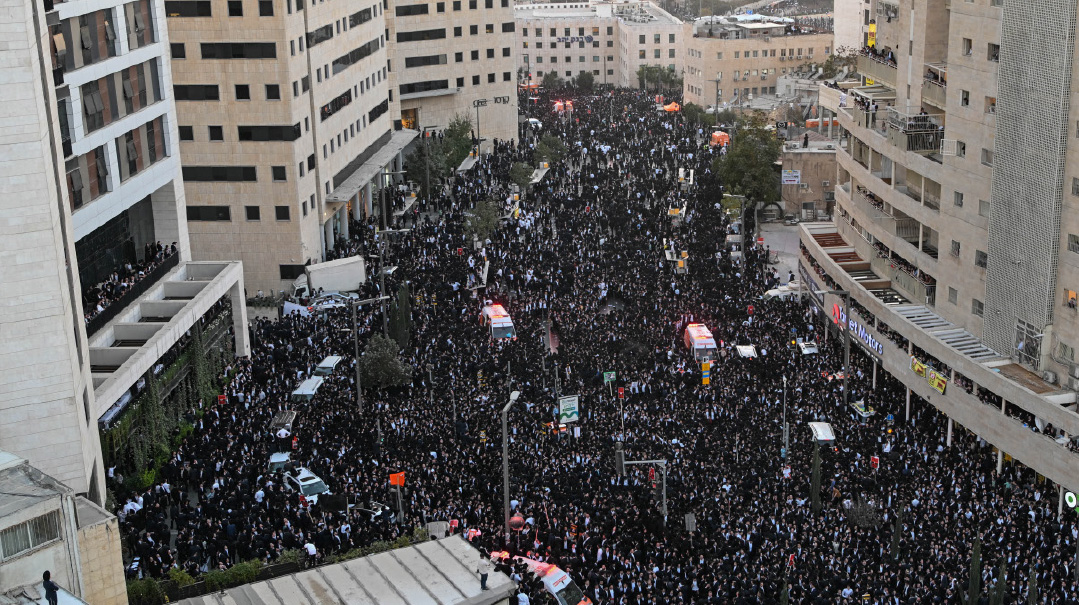Between Bad and Worse

If the IDF fights on, where are the jets?

1
Sometimes a good balcony view reveals more than the most sophisticated radar system. People living near the Tel Nof airbase south of Rechovot — the Israeli Air Force’s main base, and its largest — can gauge the security situation based on noise pollution levels on Shabbos, Yom Tov, and late at night.
A Tel Nof neighbor and retired F-16 squadron commander, MK Matan Kahana, once gave me a tip for distinguishing nighttime IAF training from emergency missions: Training flights are scheduled as early in the evening as possible, to enable pilots to make it home in time for dinner.
But if you hear jets roaring after ten at night, or during Shabbos and Yom Tov, that indicates an operational mission. And the more deafening the noise, the heavier the munitions the aircraft are likely loaded with. So the relative quiet around Tel Nof over the past three weeks is significant.
At 6:30 a.m. on Simchas Torah, we woke up to three continuous hours of sirens, impacts, and interceptions — no coffee breaks. We would later learn that the massive barrages fired in the direction of Tel Nof, the airbase closest to Gaza, were intended to disrupt the takeoff of warplanes and delay the IAF response.
The silence from the airbase that morning was deafening. Everyone knew something very bad was happening down south because through hours of sirens and rocket fire, the roar of fighter planes was simply not heard. Time and a commission of inquiry will tell where the IAF disappeared to that dark morning, but after Simchas Torah, the silence was broken. The sound of IAF fighters taking off for Gaza was heard every night for three months — until about three weeks ago.
Since January 1, 2024, the silence from the airbase has been like the quiet that prevailed on the morning of Simchas Torah, October 7. It speaks volumes about the intensity of the IAF’s current activity in the Gaza Strip.
2
Prime Minister Binyamin Netanyahu convened a recent press conference to send a clear message to the nation as well as his coalition partners: “We’ll continue fighting until all our goals are met.” But the fact that he felt the need to say it at all raised eyebrows.
The first two phases of fighting constitute the most protracted high-intensity war the IDF has ever waged in the Gaza Strip. This war is slowly transitioning to “Phase 3,” with the IDF withdrawing from key positions in the Strip and beginning a partial release of reserve forces.
War will rage throughout 2024 — in the south, and very likely in the north as well. But if the war cabinet has its way, the main fighting in Gaza is behind us. From now on, the war will be waged with the intensity of an operation rather than a war, based on the paradigm of the 2002 Operation Defensive Shield to quell the Second Intifada in Judea and Samaria. With targeted sorties, units on standby, and improved human intelligence, the IDF will try to “mow the lawn,” as it did with success in Judea and Samaria in 2002.
But the comparison to Judea and Samaria doesn’t really do justice to the IDF’s challenges in Gaza, where it still faces entrenched positions in the central and southern Strip. Thousands of guerilla fighters who fled south are waiting to return the moment the IDF pulls out, with hundreds of hidden rockets ready for use. Unlike in Judea and Samaria, where Defensive Shield created a vacuum that the IDF periodically fills with new targeted raids, in Gaza the void is filled by Hamas within 24 hours of the withdrawal of the last Israeli soldier.
Pipe dreams about replacing the terrorist regime with alternative civilian government are irrelevant as long as Hamas remains on its feet. And when you add to all this the unimaginable number of abductees and the impact of the public campaign calling for their release, even at the price of a deal with Hamas that would end the fighting, it’s hard to avoid a sense of futility. None of us should envy the decision makers, who face a choice between bad and worse.
3
There’s no shortage of excuses for dialing down the Gaza fighting, from the cost to the economy, to the Biden administration’s pressure for calm in an election year, to the resources that need to be held in reserve for a possible attack on Lebanon — where Hezbollah’s arsenal is far more powerful and precise than Hamas’s.
But there’s another reason for Israel’s military drawdown in Gaza, which I became aware of last week talking with friends on leave from service. I met them at a café on an access road in the south, after more than three months of reserve duty, 100 days of isolation from family, and complete detachment from their daily routine. One by one, they described unimaginable physical and mental suffering tempered by their cohesion and sense of mission.
“In recent weeks, alongside the tremendous and astonishing strengths this generation has shown, there’s a sense of ‘too much,’ ” lamented a friend, a company commander in Givati.
Three weeks ago, soldiers in the field were hearing that many reservists would be discharged in the second half of January. “They’re starting to release us in trickles, but in the meantime, most of us have been informed that we’ll remain in reserve service at least until the beginning of February, and maybe even beyond. If we were needed for a final push to crush Hamas, we could bear it, but if they expect us to stay on for a drawn-out retreat, it just won’t work.
“Many of my soldiers feel that the economy, which stagnated for the first two months, is coming to life and moving on without them,” my friend said. “We’re talking about people with families, some self-employed whose businesses are simply collapsing. Others are employees protected by law from dismissal, but in practice they see workplaces already looking for temporary replacements — which they worry will become permanent.
“Every time you send reservists out on leave,” the Givati commander added, his uniform dusty from weeks of fighting, “two or three drop out, unwilling or unable to return. You can’t force any breadwinner to return to battle after 100 consecutive days of fighting. Everyone talks about the shortages of equipment. As a commander in the field, I can say there’s also a shortage of manpower.”
The current political discourse, which they hear when they’re on leave, hasn’t been easy on the reservists, either.
“On the ground, we’re cut off from the media,” one told me, “but every time I come home to visit my wife and children, I get extremely depressed. The news on the radio takes me back to the year before Simchas Torah. Instead of the public being united behind us, the divisions are coming back. There are moments during leave when I miss the sound of the cannons down in Gaza. It’s better than the poison I hear in the media.”
(Originally featured in Mishpacha, Issue 996)
Oops! We could not locate your form.







